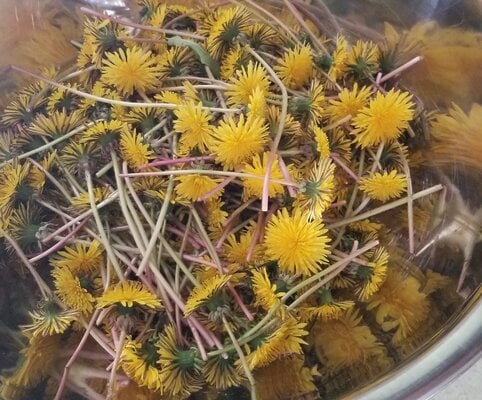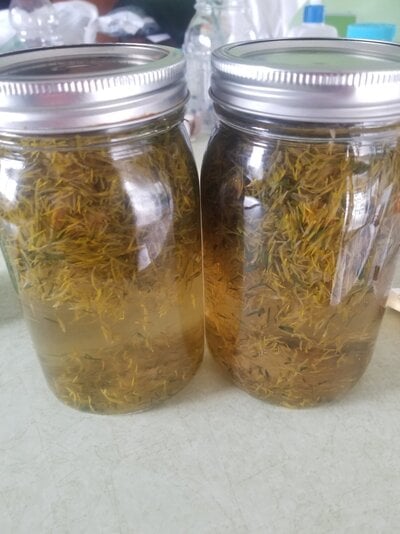Ok this looks like an amazing idea!
Could you explain it for my wee brain please.
There's a tube in your raised bed and do you only put water in it or the whole bed? And does the noodle indicate water needed when it is dry?
Details pretty please!
What you are looking at is my sub-irrigated elevated raised bed. It's not a normal raised bed, because there is a water reservoir of 3 inches on the bottom of the planter. In my 2X4 foot planter, that makes about 15 gallons of water capacity in the bottom of the planter. I used an old rubber liner I had to make the bottom hold water. I went up about 6 inches inside the planter, but you only need it to hold 3 inches of water.
In the bottom of the planter, i have it lined with 4 inch perforated drain pipe, with the ends of the drain pipes covered with landscaping fabric so the planter soil mix does not get into the drain pipes. On the planter, there is a excess drain hole drilled 3 inches up from the bottom, which is why there can only be 3 inches max of water in the reservoir. This leaves a 1 inch air gap between the top of the drain pipe and the max fill water line. You need that 1 inch air gap to prevent the roots from drowning in water.
The fill tube in that picture is just a PVC pipe that is stuck vertically from the top of the planter down inside one of the drain pipes. When you fill the planter with water, you want the water to go directly into the drain pipes and the perforations in the drain pipe will disperse the water to all the other pipes and potting soil. When the planter is still empty of water, I cut a slice of swimming noodle so the length of the noodle goes down all the way to the bottom of the fill tube up to even with the top of the fill tube. In my planter with the tube, that was about 18 inches. When you add water later, the noodle will rise above the top of the fill tube, indicating that you have water in the reservoir. As the plants drink up the water, the indicator will drop. Eventually, the indicator will be even with the top of the fill tube at which time I will refill the planter.
After all the drain pipes are lined in the bottom of the planter, and the fill tube is installed, then you just start filling the planter with potting soil mix (I made my own), letting the soil fall between the pipes and then eventually covering them. The soil between the pipes will wick up the water, as needed, to the plants above. The 1 inch air gap provides oxygen to the soil so nothing drowns.
These sub-irrigated planters are designed to use the fill tube for watering. In theory, that makes the plants grow longer, stronger, roots down to the water below. Stronger roots make better plants which in turn bear more produce. If you only watered from on top of the surface, then the roots would not have to grow deep to get water. In a normal rainfall summer, there is enough natural rain to wet the topsoil and I never worried about it. Last year we had a terrible drought, so, yes, every once in a while I would top water the planter with a deep soaking. I don't know if that was necessary, but without any natural rain during our drought, I wanted to cover all my options. In any case, you can see how well the beans grew, so I must have done it right.
If you made it this far, let me finally offer the YouTube video where I got my inspiration on this concept. I basically took his idea and modified it to my build. I added the slice of swimming noodle to use as a water level indicator for my setup, and that idea has really worked well for me. If you really want a better understanding of the sub-irrigated system, then it is worth spending 30 minutes watching this video.




